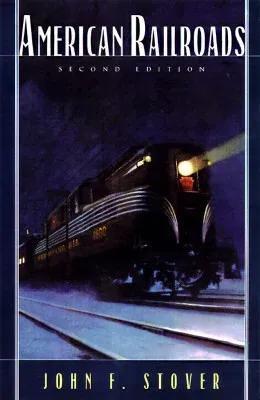Few scenes capture the American experience so eloquently as that of a
lonely train chugging across the vastness of the Great Plains, or
snaking through tortuous high mountain passes. Although this vision was
eclipsed for a time by the rise of air travel and trucking, railroads
have enjoyed a rebirth in recent years as profitable freight carriers.
A fascinating account of the rise, decline, and rebirth of railroads in
the United States, John F. Stover's "American Railroads" traces their
history from the first lines that helped eastern seaports capture
western markets to today's newly revitalized industry. Stover describes
the growth of the railroads' monopoly, with the consequent need for
state and federal regulations; relates the vital part played by the
railroads during the Civil War and the two World Wars; and charts the
railroads' decline due to the advent of air travel and trucking during
the 1950s.
In two new chapters, Stover recounts the remarkable recovery of the
railroads, along with other pivotal events of the industry's recent
history. During the 1960s declining passenger traffic and excessive
federal regulation led to the federally-financed creation of Amtrak to
revive passenger service and Conrail to provide freight service on
bankrupt northeastern railroads. The real savior for the railroads,
though, proved to be the Staggers Rail Act of 1980, which brought
prosperity to rail freight carriers by substantially deregulating the
industry. By 1995, renewed railroad freight traffic had reached nearly
twice its former peak in 1944.
Bringing both a seasoned eye and new insights to bear on one of the most
American of industries, Stover has produced the definitive history
ofrailroads in the United States.

